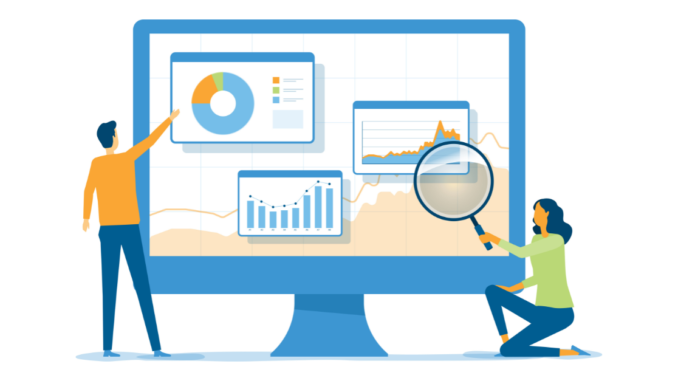
From the internet’s earliest days, online publishers have been confused about website analytics. Even back in the day, when all anyone really cared about was “hits” or “eyeballs”, most people didn’t really know what that meant. Just to confuse things a little more, web admins were presented with multiple analytical tools that often contradicted each other. In a misappropriation of Segal’s Law, which states a man with two watches will never know the right time, nobody knew where they stood in terms of traffic.
Thankfully, Google came to the rescue in 2005 with Google Analytics. This free and incredibly powerful web analytics service provided such detailed results it completely eclipsed other paid-for analytics services. As such, Google Analytics quickly became and continues to be the most popular web analytics tool on the market.
But Google Analytics doesn’t come without its challenges.
The Problem with Google Analytics
Perhaps the biggest problem with Google Analytics is that it’s too good.
You may already be using Google Analytics. But in reality, you are probably barely scratching the surface.
Because Google Analytics provides so much information, it can be somewhat overwhelming. Learning to get the most out of the platform takes time and effort. This is an investment that many online marketers cannot afford. And so, like so many other online tools, Google Analytics is often dramatically underutilized.
Sure, it’s easy to tell with a quick glance how many people have landed on a specific page or where they came from. But without careful consideration, this data is just a vanity metric at best.
Setting Objectives
Successful implementation of Google Analytics, like everything else you do in business, is built around setting clear objectives. These objectives should help you make more informed, “business-critical” decisions based on the data collected in Google Analytics.
For example, while it’s nice to know how many people are visiting your website, it is business-critical to understand how your various marketing campaigns are driving this traffic and, more importantly, how they generate conversions (sales or lead generations).
This creates a significant challenge for businesses driving traffic through multiple sources (SEO, paid search, email marketing, social media, etc.). If you are not tracking each and every point of engagement and attributing value accordingly, you may be over or undervaluing a specific channel. For example, a business might place too much weight on a prominent acquisition channel like paid search and completely underestimate a much more profitable channel like email.
Perhaps the most valuable use of analytics tools like Google Analytics is the ability to monitor and test various optimization strategies. Careful analysis of your users, sessions, and conversions will help you identify trends and optimize your strategy accordingly. Equally importantly, understanding what needs to be fixed can help prevent you from making expensive mistakes. Remember, just because something worked for you previously doesn’t mean it will work in the future. Understanding trends can then help prioritize specific strategies.
Remember, if you don’t set objectives before starting a project and then carefully analyze your results against those objectives, you’ll never know if you’ve been successful. With no goals in place, you’ll also quickly lose focus and risk the efficiency of your operation.
Discovering New Opportunities
Google Analytics won’t just answer questions you already have about your business. It may even present some new ideas. As such, it’s always a good idea to spend a little time in your analytics looking for inspiration.
For example, a US-based business noting a spike in traffic from Europe may want to consider how it can better serve those clients’ needs. Could it provide a localized service or perhaps consider employing local representation?
But even the simplest information can help you make better business decisions. For example, monitoring the time of day people visit your site could help you better manage customer support and customer service resources.
Why Now is a Good Time to Start Thinking About Google Analytics
Whether you have been using Google Analytics for some time or are entirely new to the platform, there has never been a better time to look at the service.
Google Analytics has constantly evolved over its 18-year history, but it’s never seen such a leap forward than with the launch of its most recent GA4 iteration.
There are many reasons why you should be moving over to GA4 now, particularly because the previous version (Google Universal) is being sunsetted in July 2023.
GA4 harnesses the power of AI to help marketers analyze traffic in an age where consumer trends and government regulations dictate ever more substantial concerns over privacy. GA4 is also optimized to track customers’ journeys over multiple devices, including traditional and mobile websites and applications.
Getting Started with Google Analytics
As with many aspects of your business’s online strategy, this first step is often the hardest. Therefore, it makes sense to sit down with an expert and discuss your initial and longer-term objectives. In addition, it’s essential to consider how every single marketing touchpoint influences the bigger picture and ensure they are all accounted for in your strategy.
To learn more about how the marketing experts at emfluence can help you better understand your analytics, contact us today at [email protected].

Leave a Reply